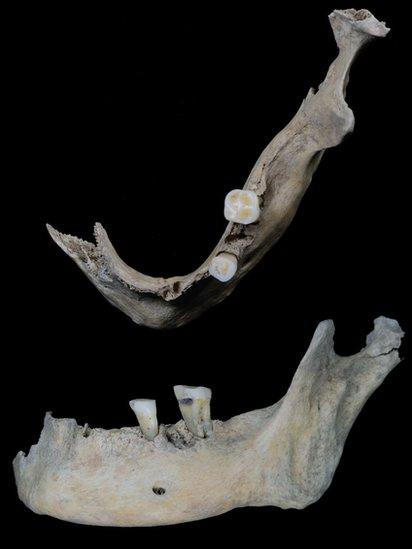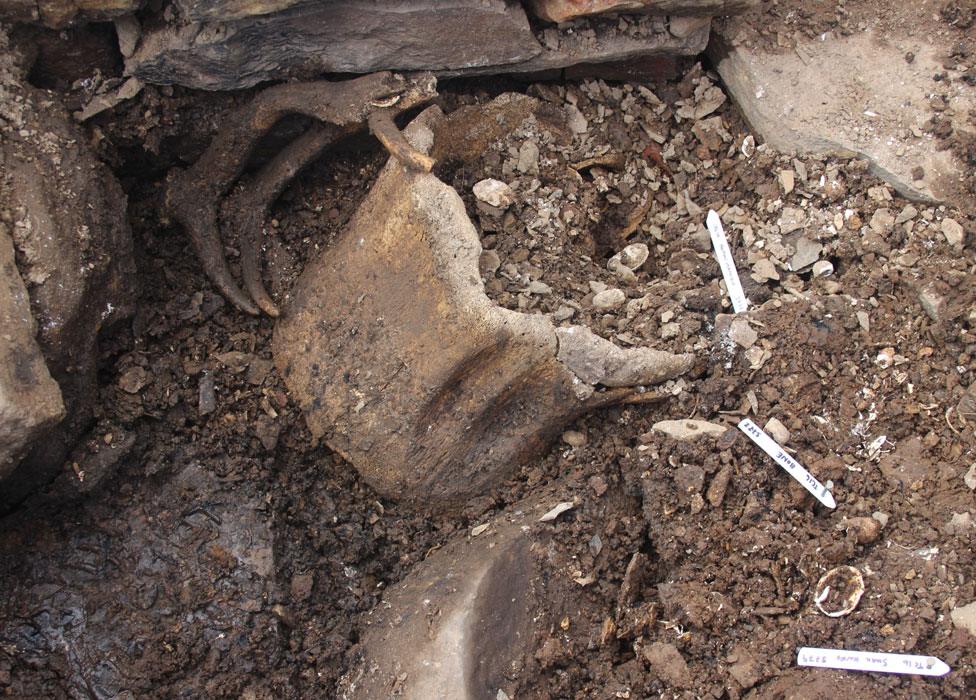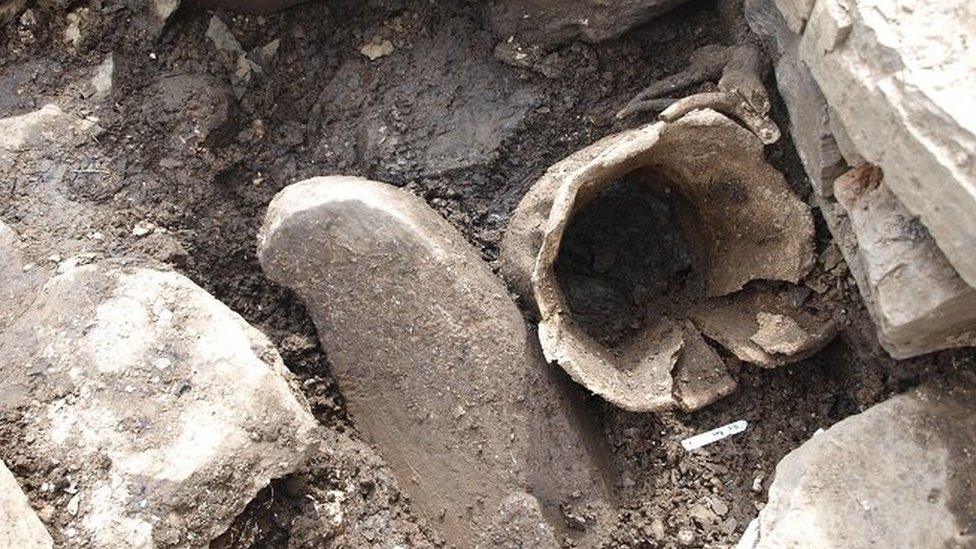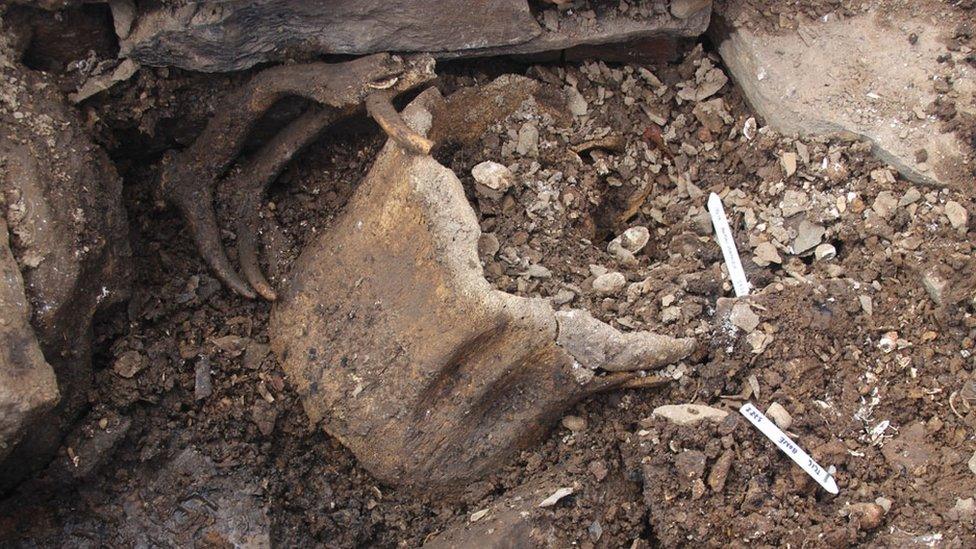Archaeologists uncover clues to life of Iron Age man
- Published

The find was made during excavations at site called The Cairns on South Ronaldsay
Archaeologists have been able to provide insights into the life of a man whose remains were found at an Iron Age site on Orkney.
A human jaw with two teeth was discovered centrally placed in a large, carved whalebone vertebra within the ruins of a broch earlier this year.
Analysis, including radiocarbon dates, of the find on South Ronaldsay show the man died when he was 50 or older.
His diet also appears to have been unusually rich in fish.

The human jaw bone and teeth found at The Cairns
Archaeologists said the isotopic values of his bone chemistry showed that he had consumed "a surprisingly high quantity of marine-derived protein", probably largely fish.
They said most isotopic studies of human remains from the Middle Iron Age, "the time of the brochs", tend to show very low levels of fish proteins in the human diet, even in coastal areas.
Brochs, also known as Atlantic roundhouses, were fortified homes built in the Scottish islands and Highlands.
The University of the Highlands and Islands Archaeology Institute has been leading digs and studies of a broch at The Cairns, South Ronaldsay.
The analysis of the jaw bone and teeth, including the Orkney Archaeology Society-funded new radiocarbon dates, show that:
The man died sometime between AD120 and AD240 in the latter part of what is conventionally termed the Scottish Atlantic Middle Iron Age
The jaw belongs to a person of some considerable age for the period, perhaps 50, but he may well be several decades older than that
He seems to have led an active working life judging by the condition of his teeth. The jawbone had grown over most of the sockets of the missing teeth showing that these teeth had been lost during life, while the surviving two were "quite substantially worn down"
His tooth loss may have been brought about partly through the man using his mouth in the manner of a third hand, to tightly clamp materials, such as grasses and straw, while working on them with his hands, perhaps in making plant-fibre items such as bags and containers

The human remains had been placed within carved whalebone

The careful placing of the jaw bone suggest the remains were of an important person
Archaeologists suggest the remains may be of an important man given the ritualistic style of his burial among animal remains in the broch.
Martin Carruthers, site director and The Cairns and Masters Programme Leader at the University of the Highlands and Islands Archaeology Institute, said: "It may not be pushing this line of consideration too far to suggest the possibility that it was his death that occasioned the final abandonment and decommissioning of the broch.
"There are plenty of examples from different cultures around the world, where the death of an important person, who had a significant association with a particular house, resulted in the end of that entire house as well."
Further analysis of the human remains are planned.
- Published7 July 2016
